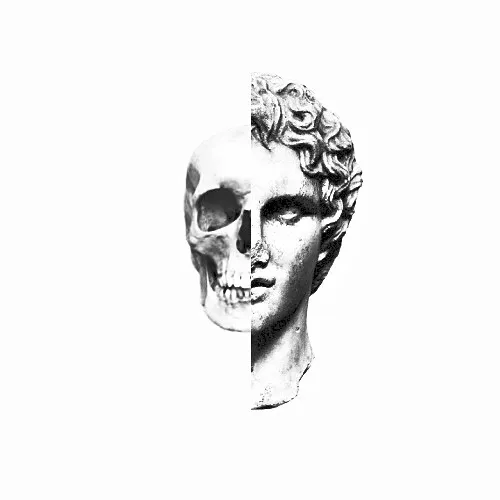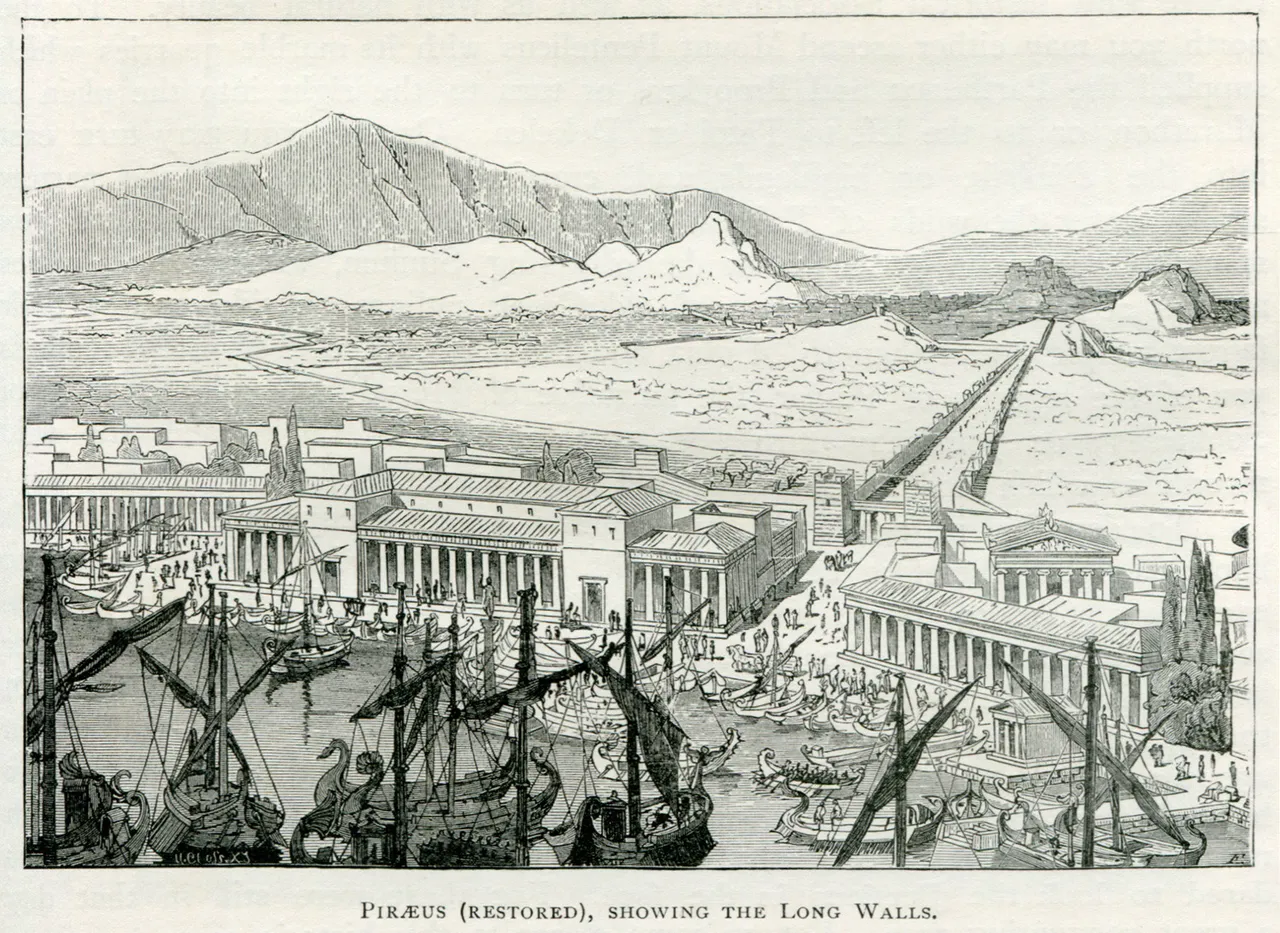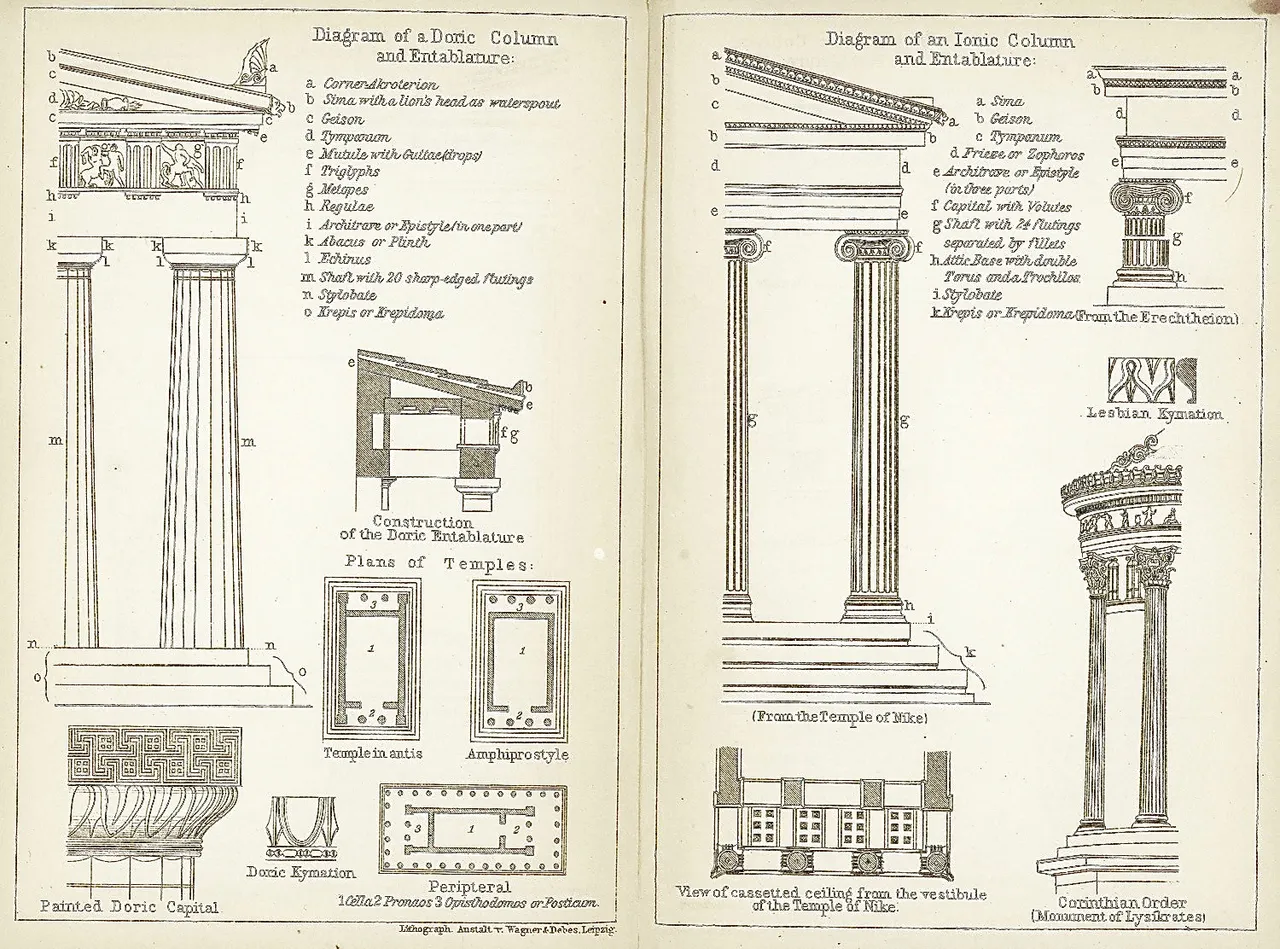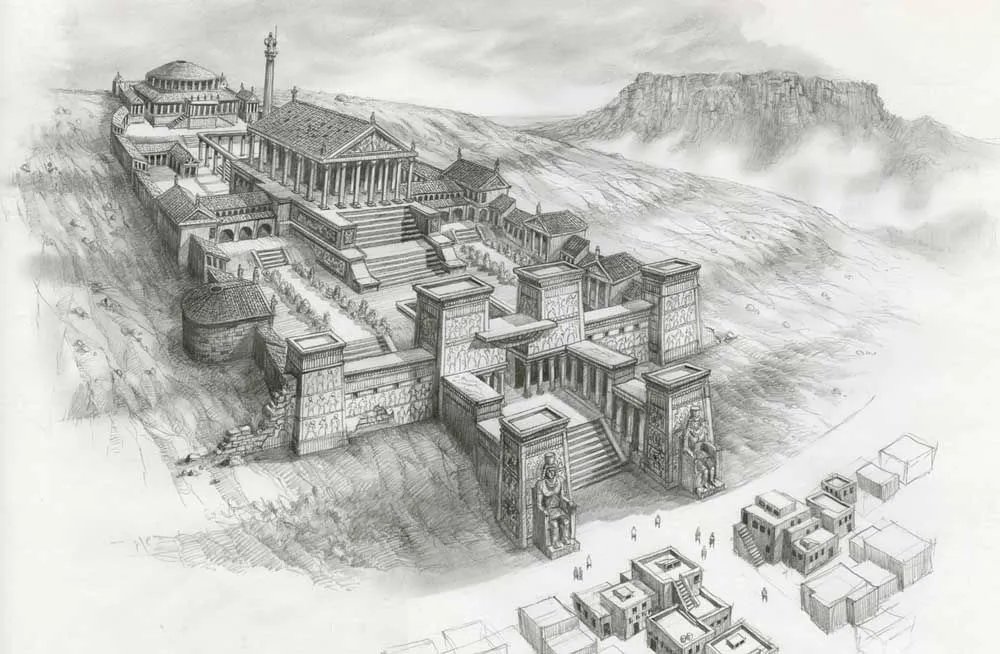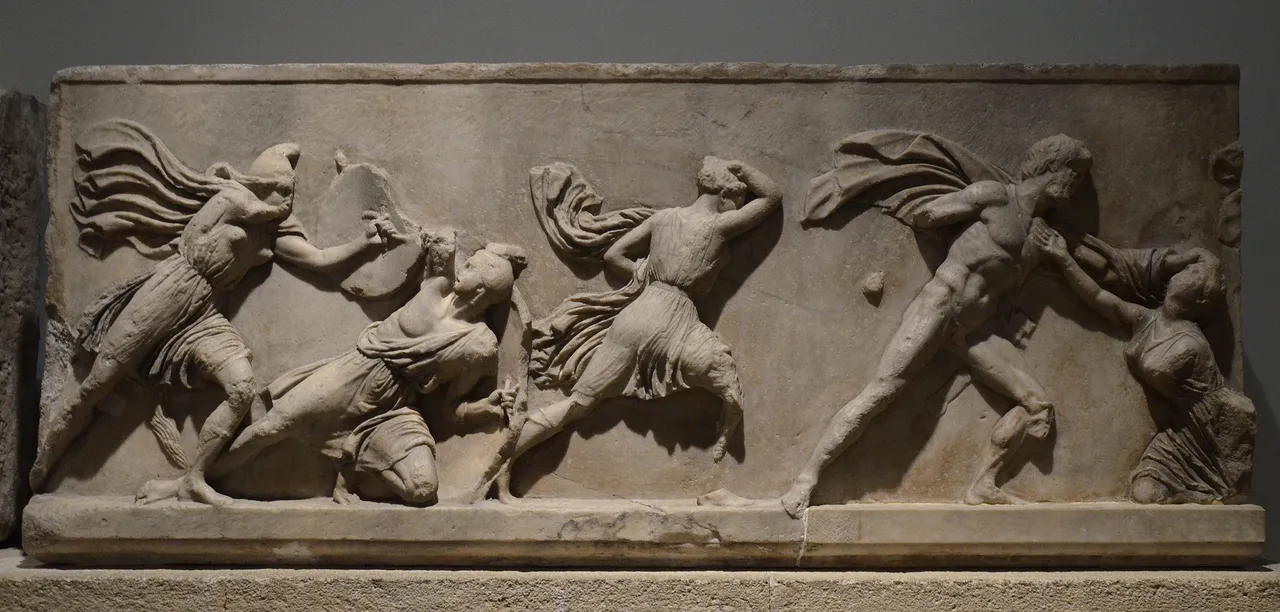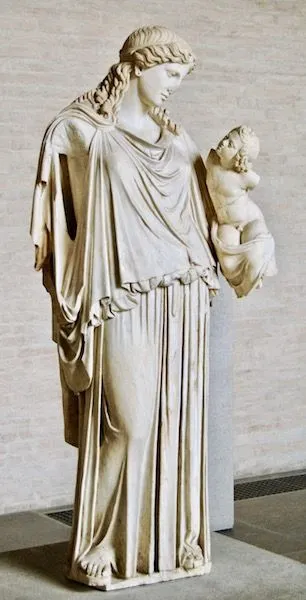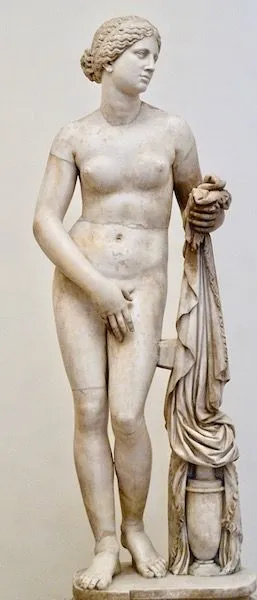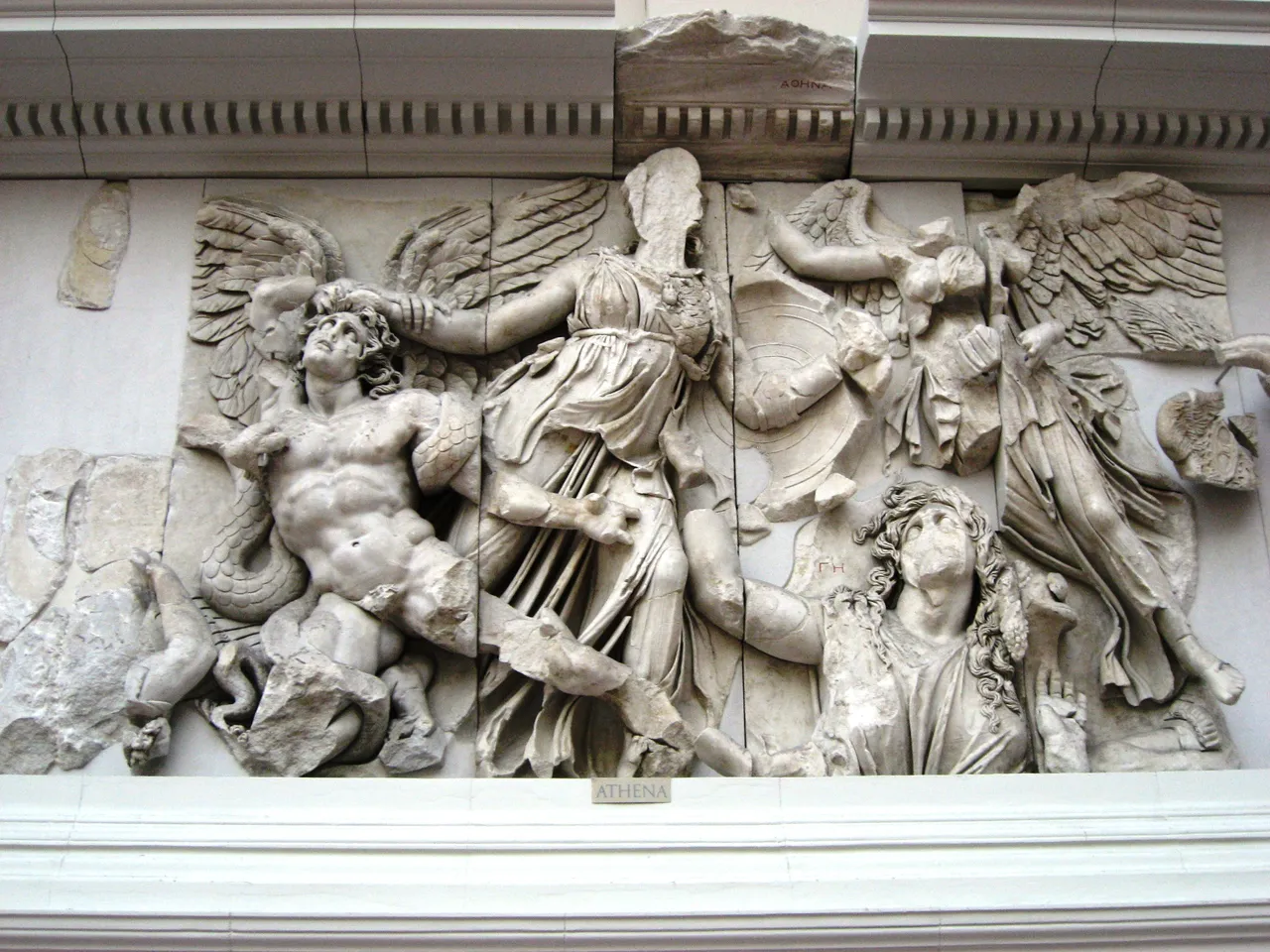The Further Development of Hellenistic Art: Architecture, Urban Planning, Philosophy and Religion
The interest in Greek art does not diminish, because this art plays a significant role in the birth of European art and is still a reference point for reflections on beauty…
New cities are arranged according to a rectangular plan - just like the fifth-century Piraeus. Examples are Priene and Pergamum - Hellenistic cities. Streets were designed wider, with care for sanitary installations and water availability. Agora is surrounded by porticoes for comfort and shade. Similarly designed are the palestrae, to which gymnasiums adjoin. On broader streets, one-story, windowless houses with a courtyard and tenement houses were built.
The Ionic order prevails, and the remaining Doric temples are characterized by slenderness and lightness. The triglyphs in friezes are not being built anymore and the Doric order can be seen only in the West of the country and in secular architecture.
While the urban layout was based on a classic checkerboard layout, the cities were unprecedented in their scale. An example would be Antioch or Alexandria, gathering communities of over 100,000 people. (Papuci-Władyka, 2001: 355)
The model from the classical times provided the cities with appropriate districts: sacral, residential, green, or administrative (Papuci-Władyka, 2001: 277-8). Hellenistic novelty (associated with the rebirth of the monarchy) was the introduction to the urban order of the palaces. Monumental palace complexes are best represented by Pergamum, the capital of the Hellenistic state located in the western part of Asia, ruled by the Attalid dynasty. The mansion in Pergamum attracted sculptors and painters, architects and writers, growing into one of the cultural centers at a time when the Hellenistic political system had already disintegrated (Stewart, 1990: 209).
The new orders limited the construction of temples, partly because the adaptation of existing sacred buildings was undertaken (Papuci-Władyka, 2001: 278). It must be remembered, however, that the Hellenistic period is also characterized by a tendency to interest people in their own affairs and reverse from classical spirituality. The architects made attempts to modernize the Doric and Ionian orders and their mixed forms - by changing the proportion, slender columns and blocks.
One should note the increase in the popularity of ornament and embellishments in a purely aesthetic role. In contrast to classical architecture, the semi-columns adjacent to the walls no longer served the construction of the building but instead supported its composition. The Temple of Athena in Tegea on the Peloponnese, by the sculptor Scopas, is equipped with a convex stylobate, gently sloping columns, which are up to six times the base of the drum. Equipped with a triple row of columns with mixed architectural orders. The Temple of Athena in Priene, of exceptional quality, is an example of permeating the Doric order to Asia Minor. Pyteos established a canon of proportions based on the Ionian foot (29.4 cm).
Architecture for the theater in the 4th century BC takes on a more monumental form. Examples of theaters of that period are the theater of Dionysus at the Acropolis, the theater in Delphi, Megalopolis, and above all, the perfectly preserved theater at Epidaurus - a sanctuary healing in Argolis on the Saronic Gulf. Its authorship is attributed to Polykleitos the younger and it is a model for later implementations, including in Megalopolis. Pausanias considered this theater to be the largest in Greece and famous for Asclepieia, being held there every four years. The auditorium of the theater is a phenomenon of sound, studied to this day due to the excellent sound distribution to all parts of the audience.
The period of the 4th century expansion also brought rapid development of science. Slowly abandoning a worldview based on mythology and focusing on researching what is real, has led to questions and undermining existing beliefs about the origin of the world. The center of contemporary science was located in Egyptian Alexandria.
Placed there the largest library of the then world and Mouseion, a science complex, was the focus of new scientific fields: medicine (Hippocrates), mathematics (Euclid), or modern physics (Archimedes) (Bernhard, 1992: 258). Artistic work has also received an adequate science which described the knowledge about art: aesthetics (Aristotle).
Two streams of Greek thought, in particular, exemplify these new trends, including the strengthening of individualism, foreign in the older history of Greece. The Stoics began to reflect on the ethical condition of man, and the development of his personality was associated with his individual ability to understand the world. Meanwhile, the students of Epicurus (341-270 BC) propagated the right to individual happiness, enjoying the carefree life. Cynics, on the other hand, promoted the release of a man from all social obligations (Ałpatow, 1961: 148).
The processes described above have contributed to the growing individualism. Classical art focused on presenting the rules governing the Cosmos. The present artists now perceived a fragment of reality, mixed up species and concepts, and interested in the details presented less sublime contents: secondary deities endowed with purely human attributes.
The sepulchral architecture of the IV century BC did not include the monumental tombs, which were rather appropriate to the areas of Asia Minor, where the influence of Greek artists was more and more visible. The tombstones were rich in ornaments and examples of such buildings are those in Lycia in south-west Asia Minor and the Nereid monument.
Mausoleum in Halicarnassus is the most unique example of tomb construction, concealing the tombs of Mausolus, the Persian ruler of Caria.
The mausoleum owes a very rich sculptural decor to sculptors such as Scopas, Timotheus, Leochares and Bryaksis, who were responsible for creating the decorations of respectively eastern, southern, western and northern walls of the building. The colossal size of the tomb required leveling the rock on a surface of 36 by 38 meters.
The sculptures of the mausoleum depict the Amazonomachy, the Centauromachy and cart races, and present an unusual sculptural artistry.
In sculpting art, as mentioned before, the most significant influence of the 4th century BC is the introduction of expression of emotional states and emotions, and the departure from the pathos proper to age V. The ideas were personified in an abstract way, an example of which is Eirene with Pluto (personification of Peace and Wealth) set in the Agora of Athens after the battle of Leuctra. This statue expressed a longing for the social order of Athens.
The attention of late-classical sculpture researchers focuses on the most prominent authors of that period: Praxiteles (Hermes with a small Dionysus, Cnidus Aphrodite), Scopas (Mausoleum in Halicarnassus, the temple of Athena Alea in Tegea) and Lisyppos - the precursor of Hellenism.
Praxiteles’ Aphrodite of Cnidus is a naked goddess - attribute to the 4th century BC symbolizing the Heroes of the Games. Nudity here indicates the innocence of the goddess, for her unspotted femininity.
Classical idealism confronted the decorativeness of the eastern Greek cities of the 4th century, and from there came to Greece a tendency to increased plasticity of sculptural performances.
The gods lost their "divinity", and thus they were equipped with typically human neuroses, defects. What's more, the spiritual content of works of art became more shallow. Praxiteles’ Hermes and Dionysus present God when he stops on the path, accompanied by the little Dionysus entrusted to him by gods to take care of. Other than it was appropriate for classical art, the group is free from deeper spiritual content: Hermes entertains the child, instead of acting as his teacher. The spiritual greatness of God is ignored and human qualities are emphasized. Little Dionysus, in greed, draws out his hands, which can be read as an association with his later image as a god of wine. (Stewart, 1991: 175)
Classical frugality of forms had a source in sublimity and expressed itself in a clear construction and expressive contours. Meanwhile, works from the Hellenistic period are characterized by vivacious dynamics, focus on the play of light.
Authored by @highonthehog
References
Images: sources linked below
Photo: @highonthehog
- Papuci-Władyka, E., Sztuka starożytnej grecji, Wydawnictwo Naukowe PWN SA, Warszawa, 2001
- Stewart, A., Greek Sculpture: An Exploration, Volume I: Text, Yale University Press, New Haven, 1991
- Bernhard, M. L., Sztuka grecka IV w. p.n.e., Wydawnictwa Artystyczne i Filmowe, Warszawa 1992
- Alpatow, M., Historia sztuki 1, Starożytność, Wydawnictwo Arkady, Warszawa, 1968
Click on the coin to join our Discord Chat

Witness proposal is here:
Go To Steem Witness Page
In the bottom of the page type: adsactly-witness and press vote.

Use small letters and no "@" sign. Or, click here to vote directly!
Thank you!
